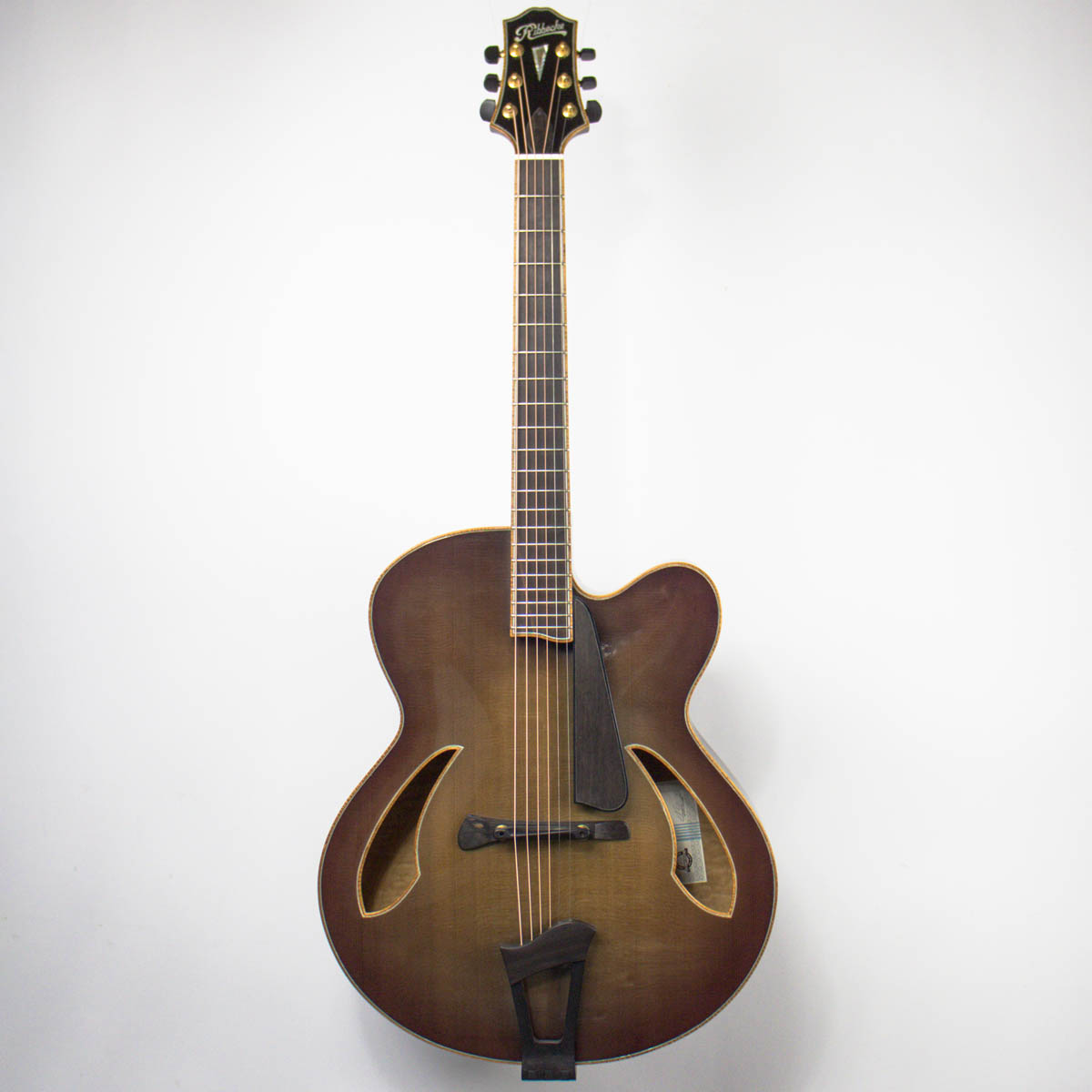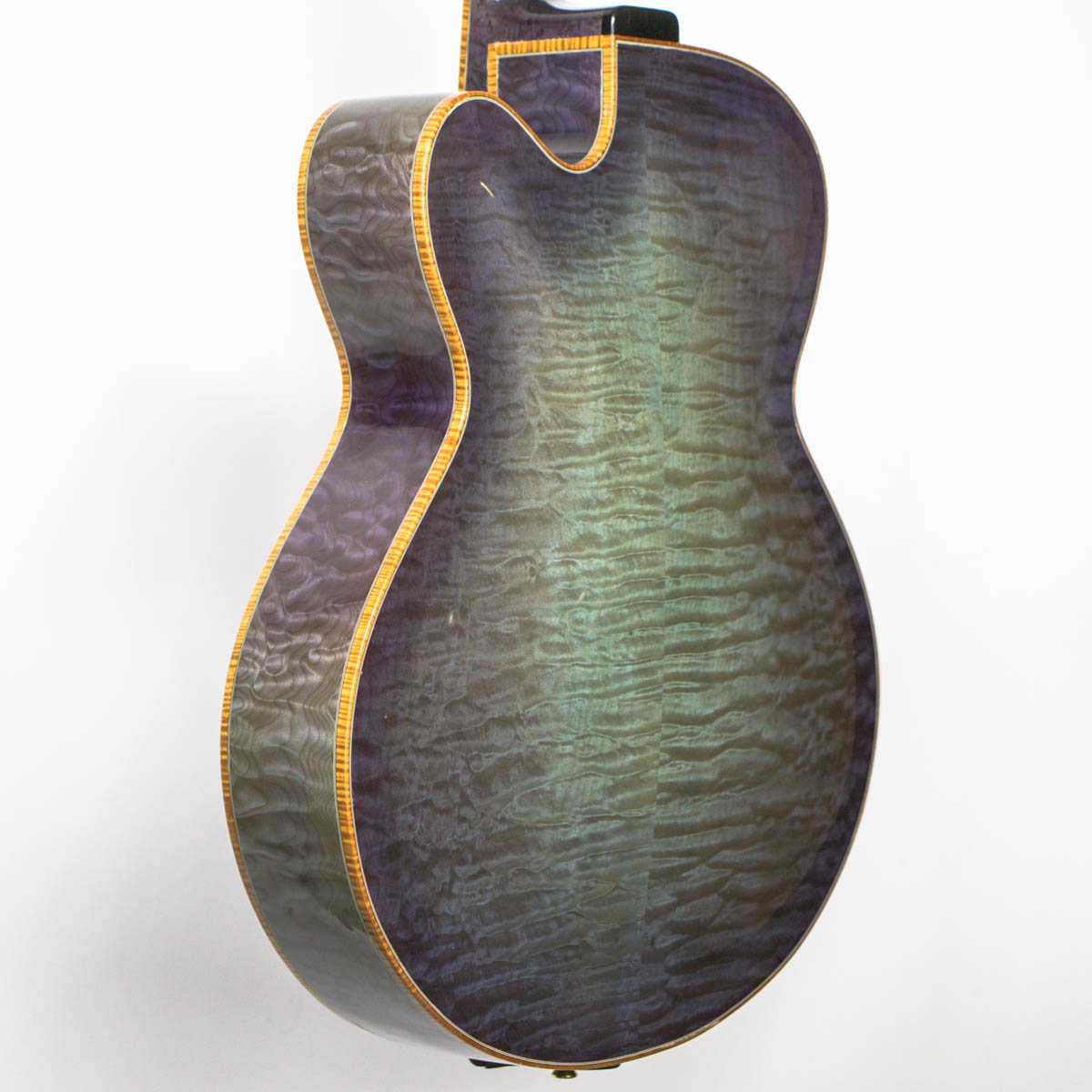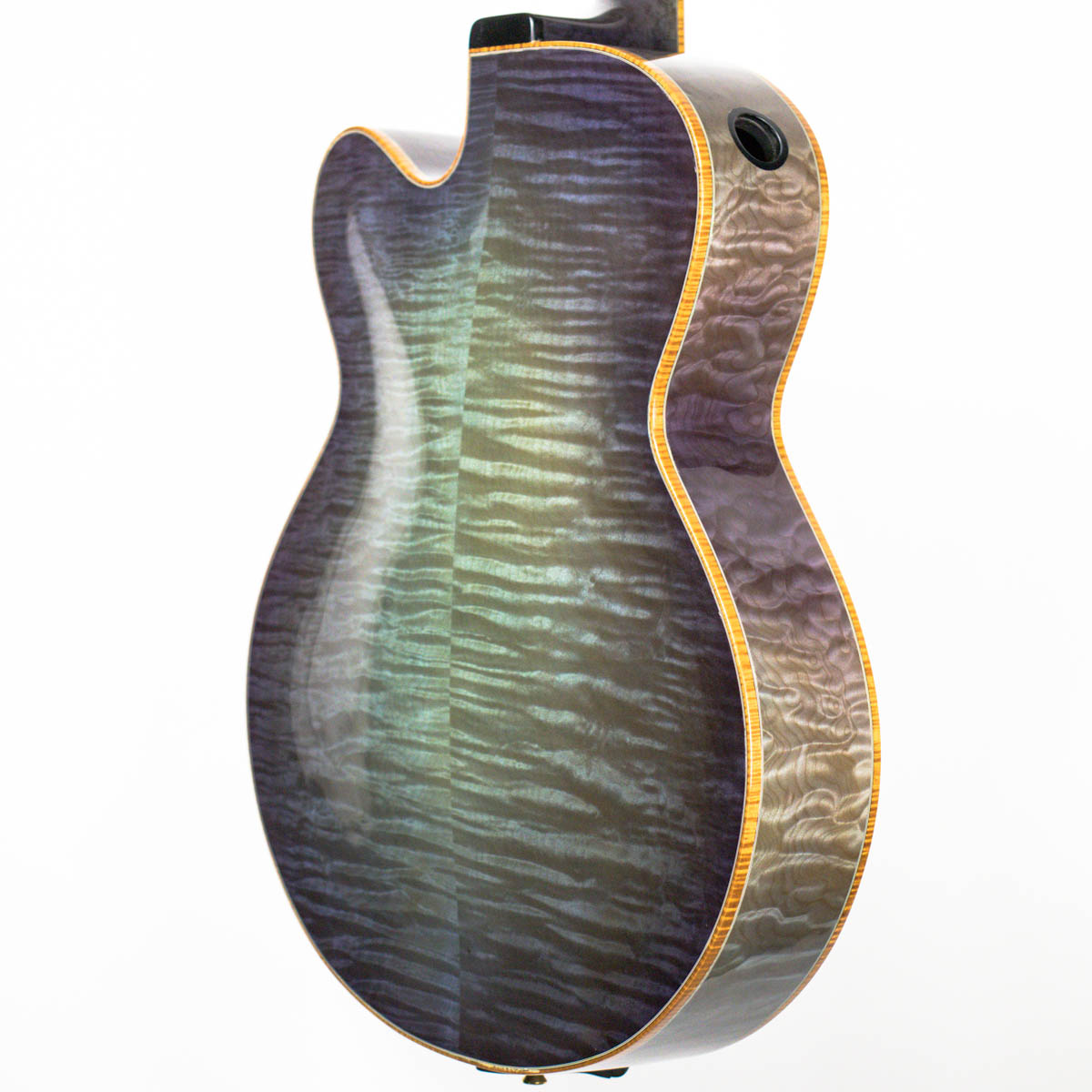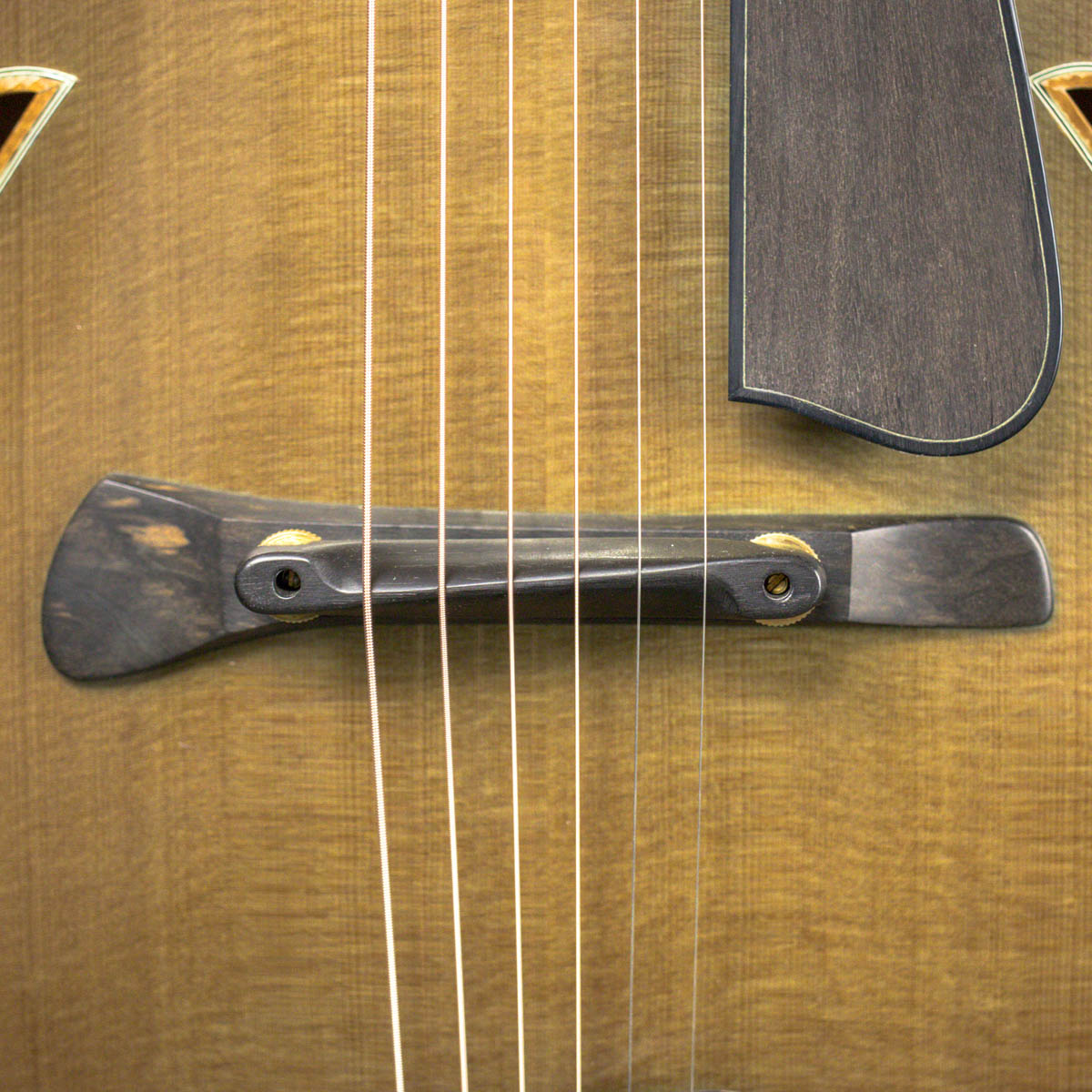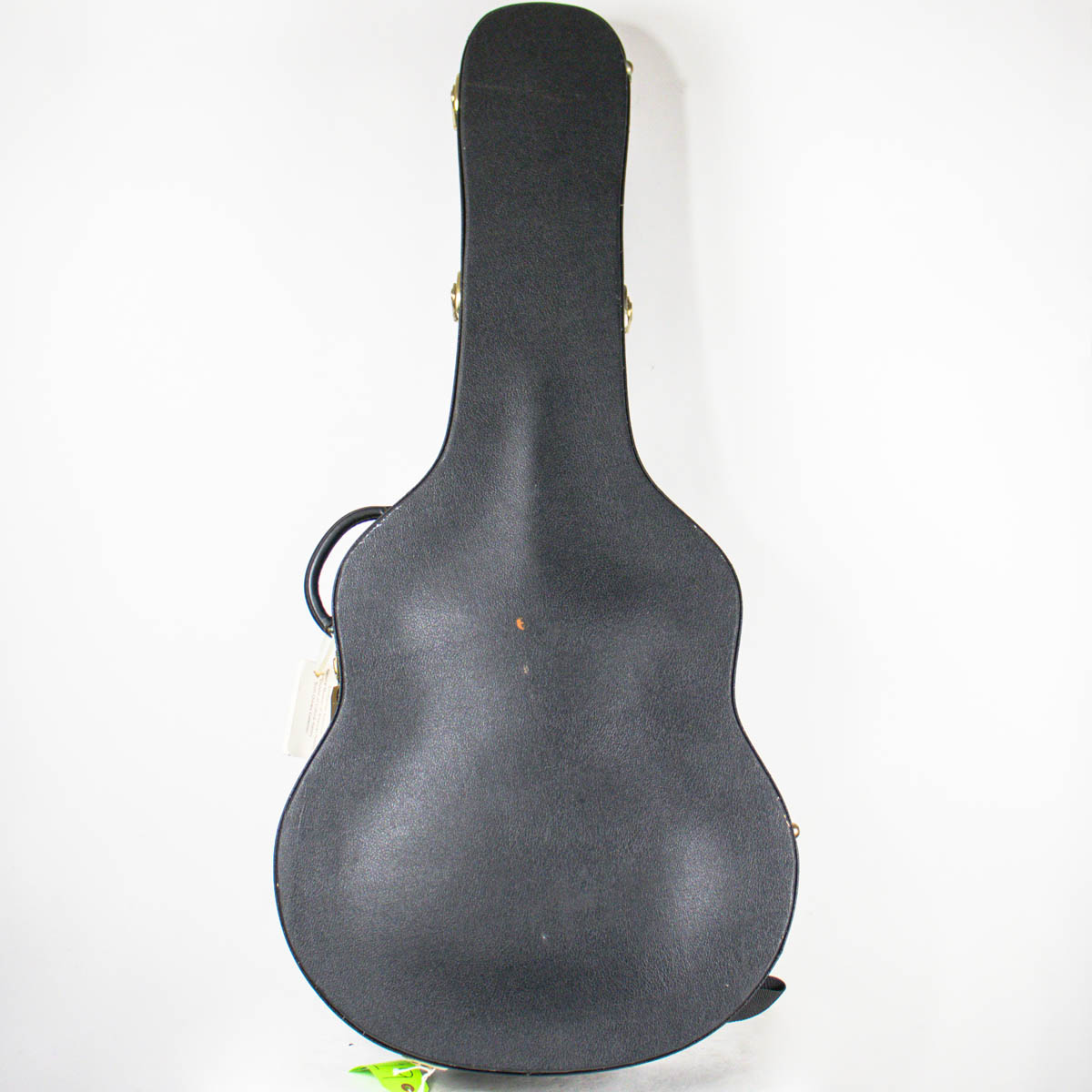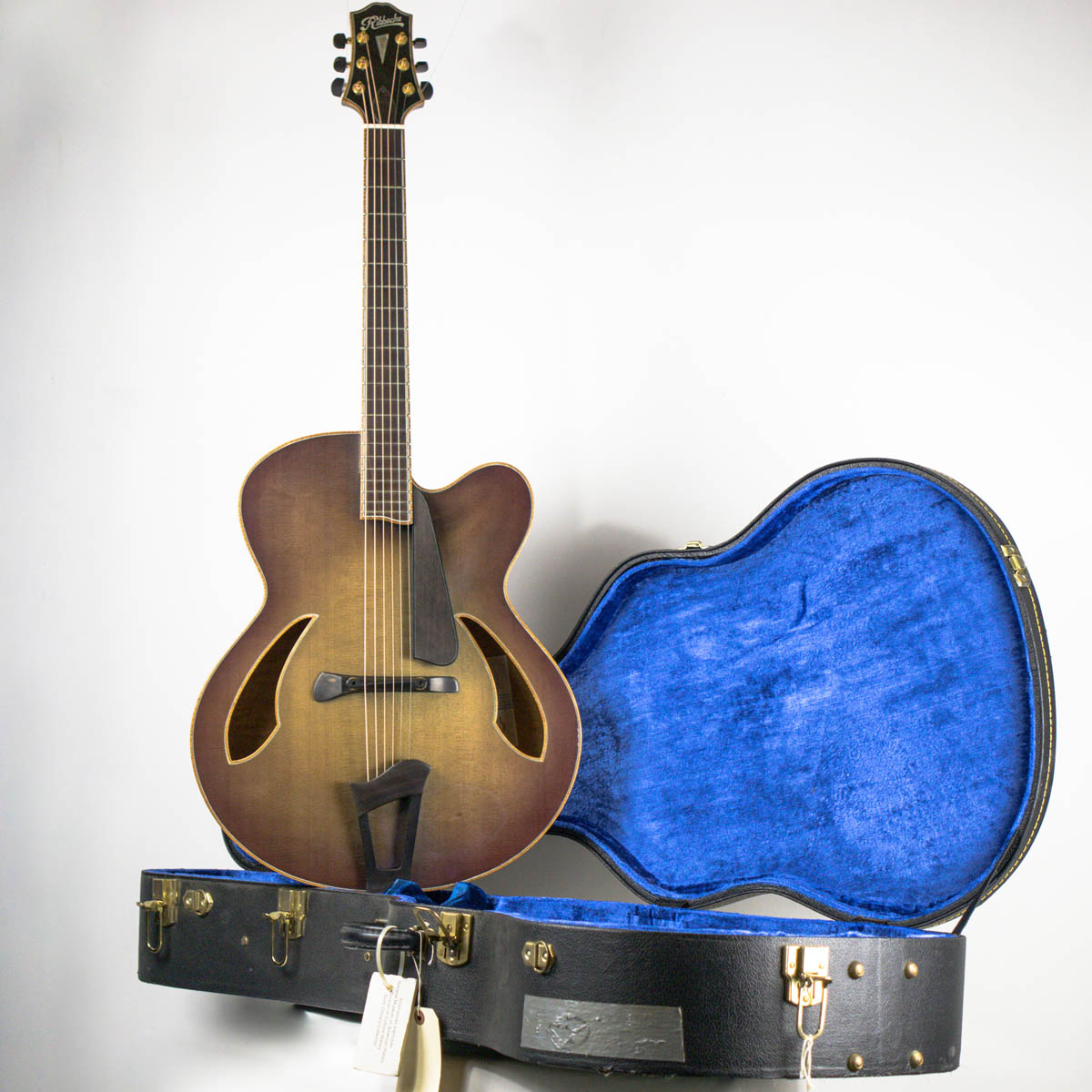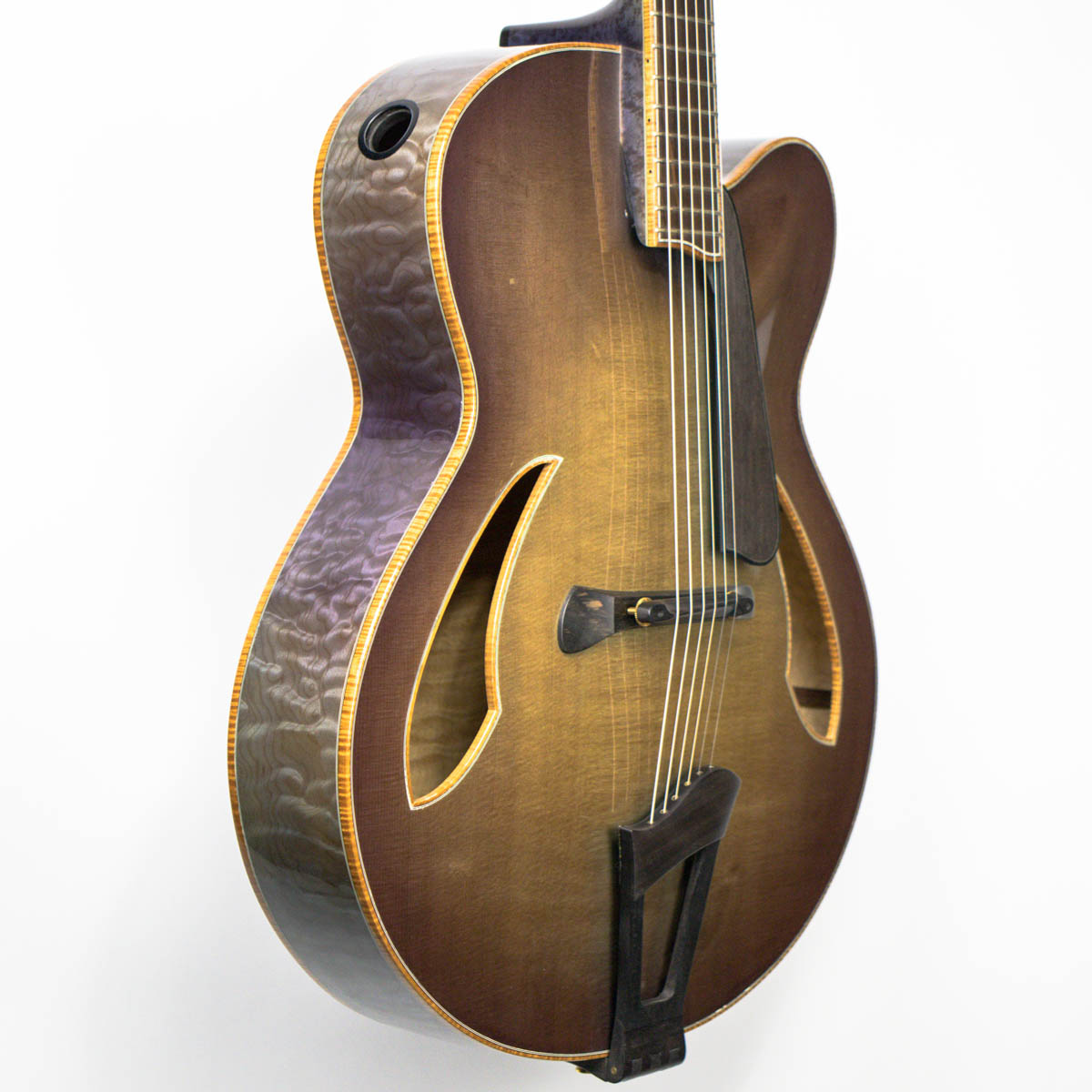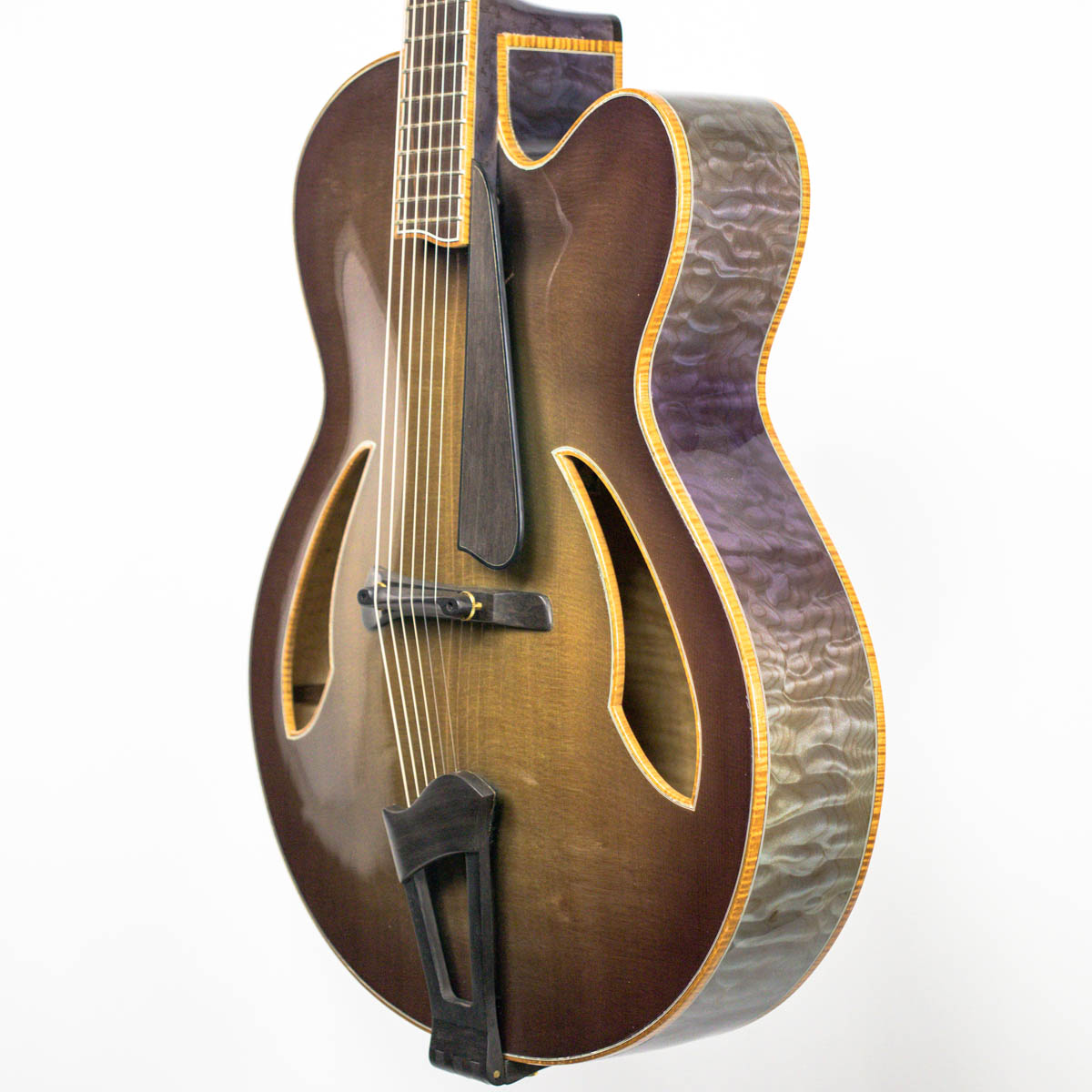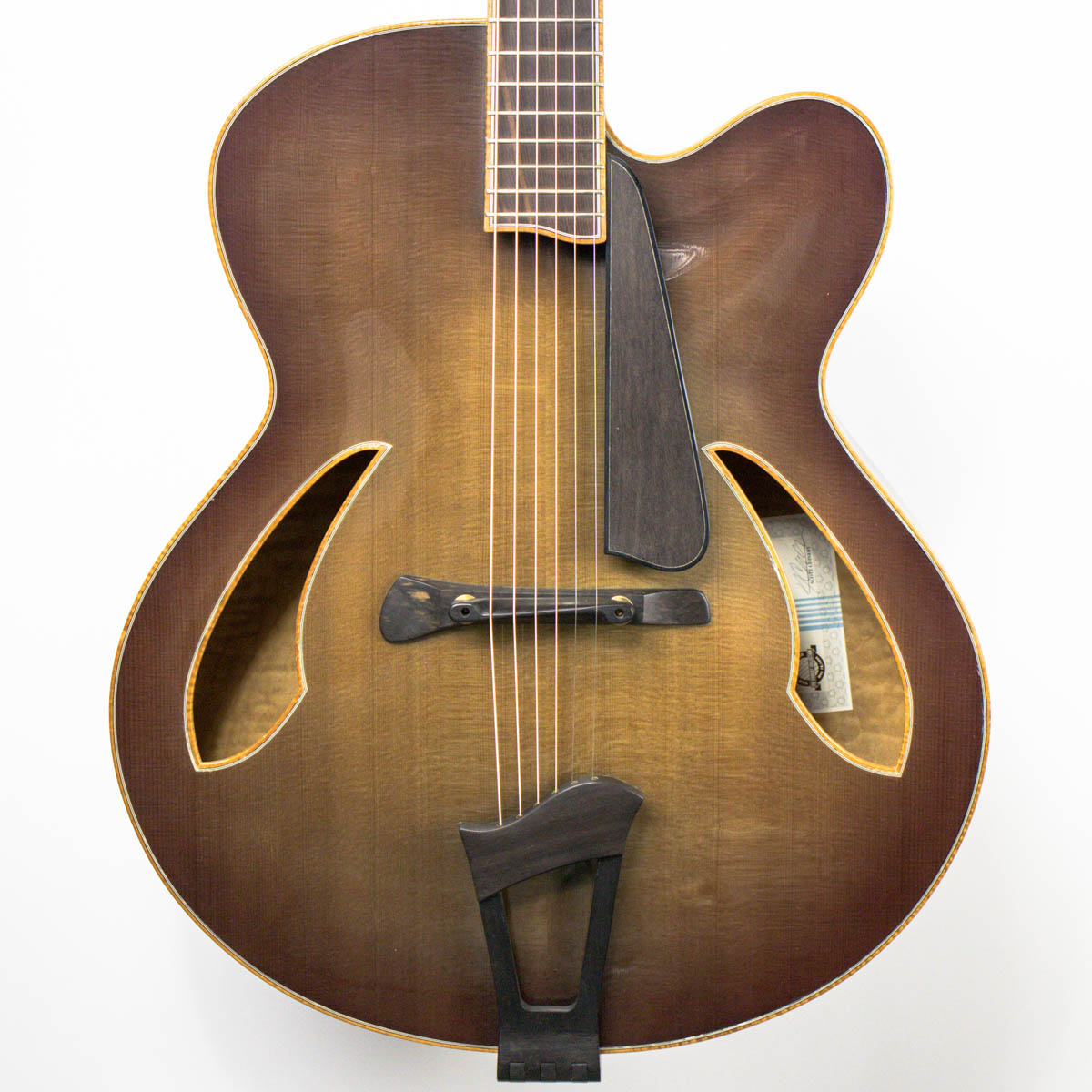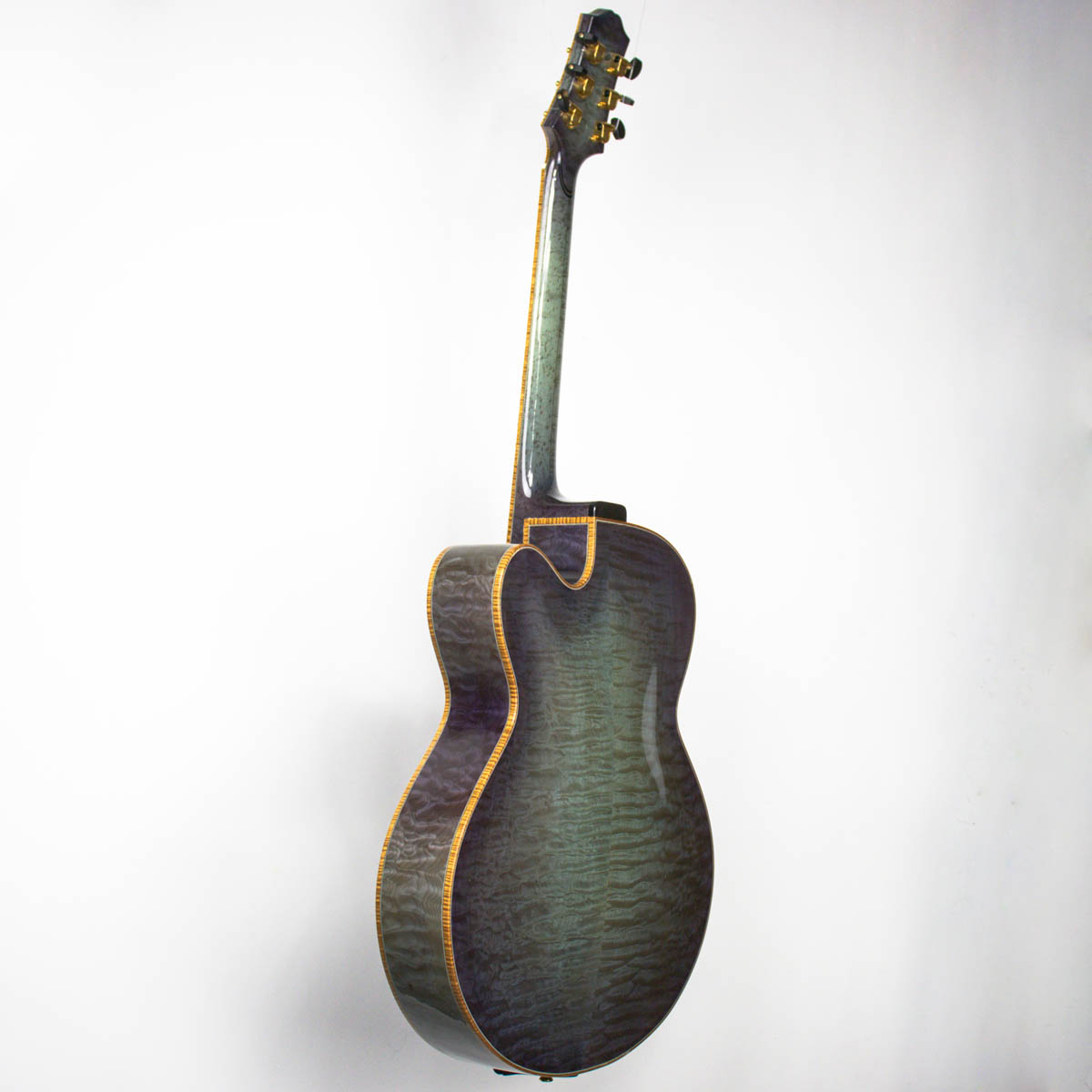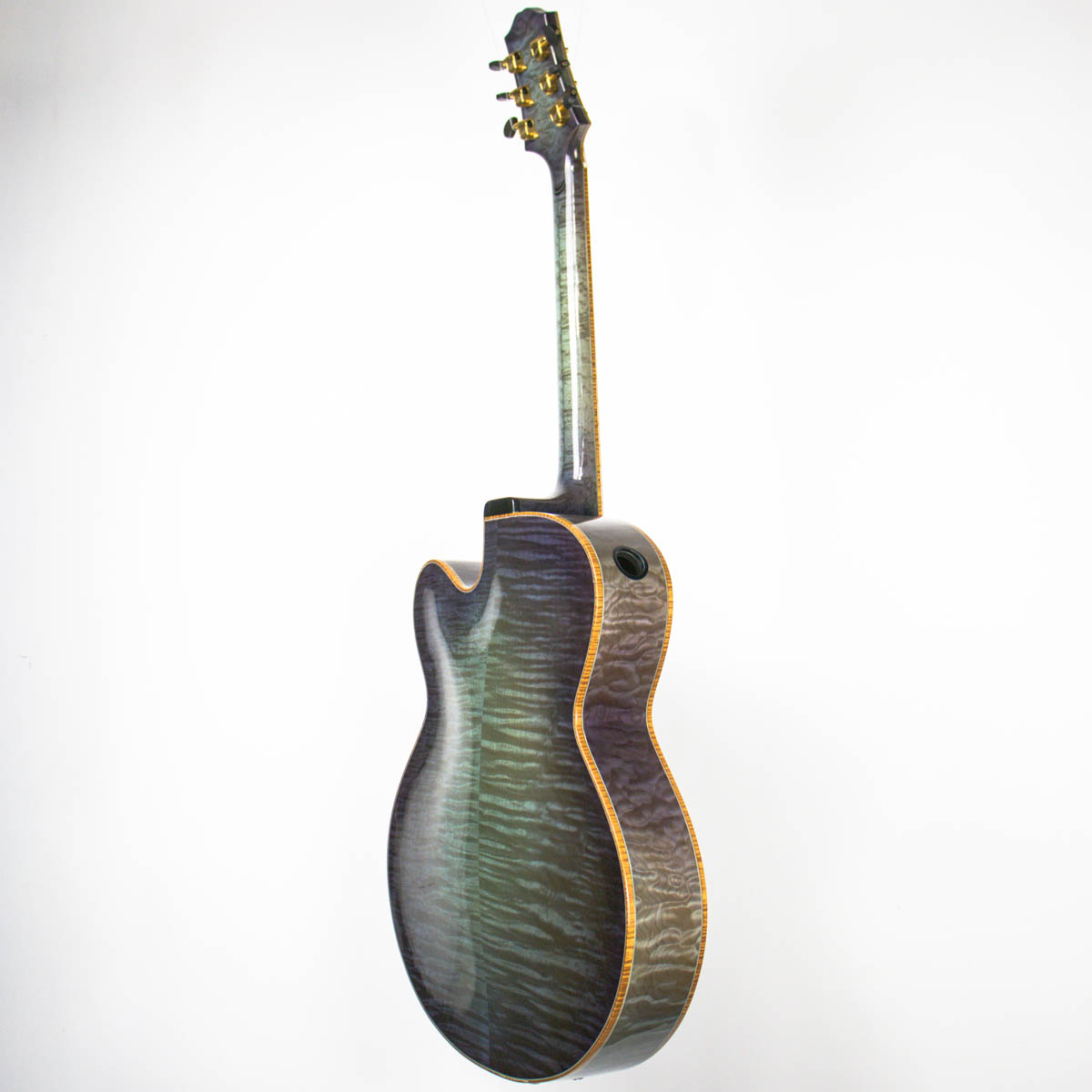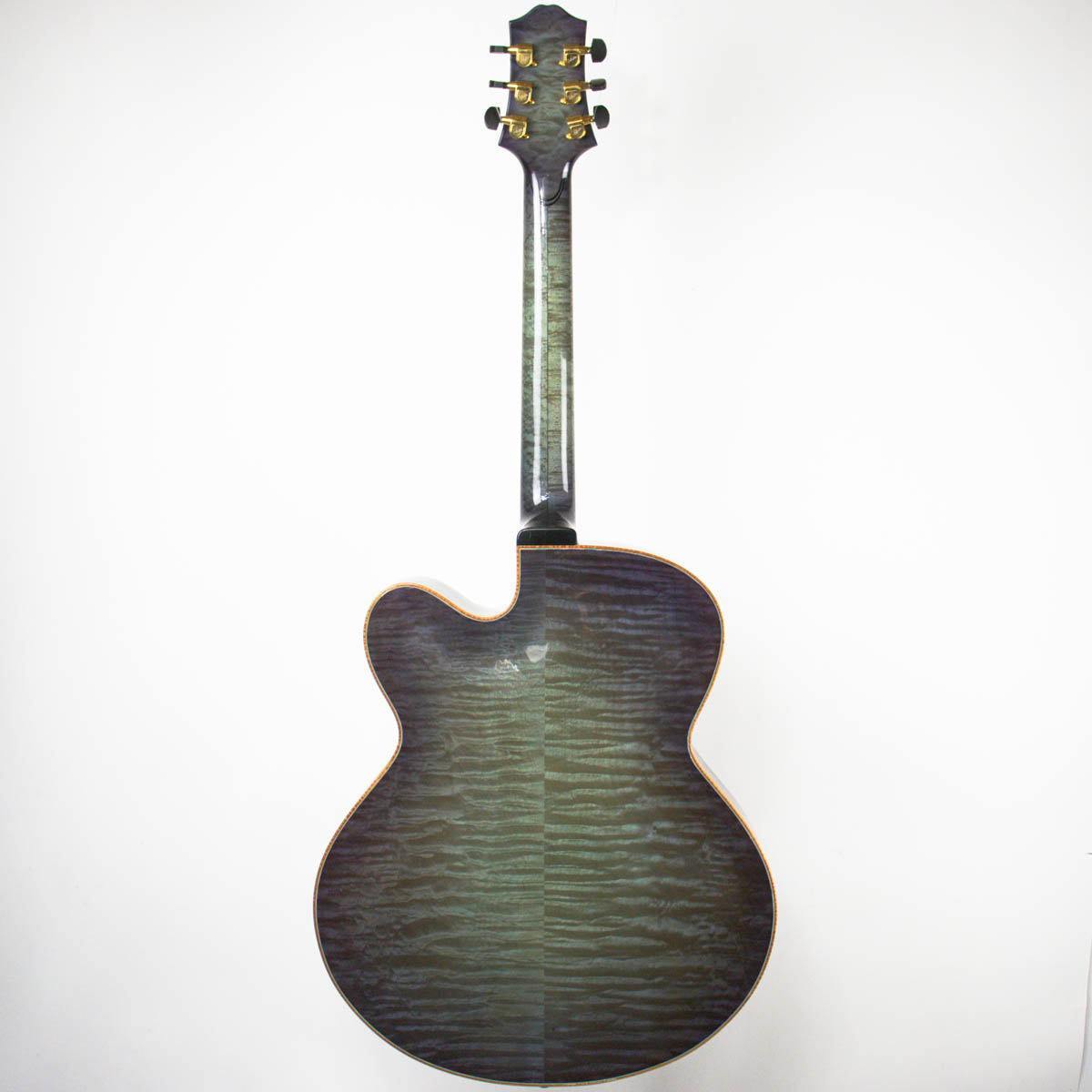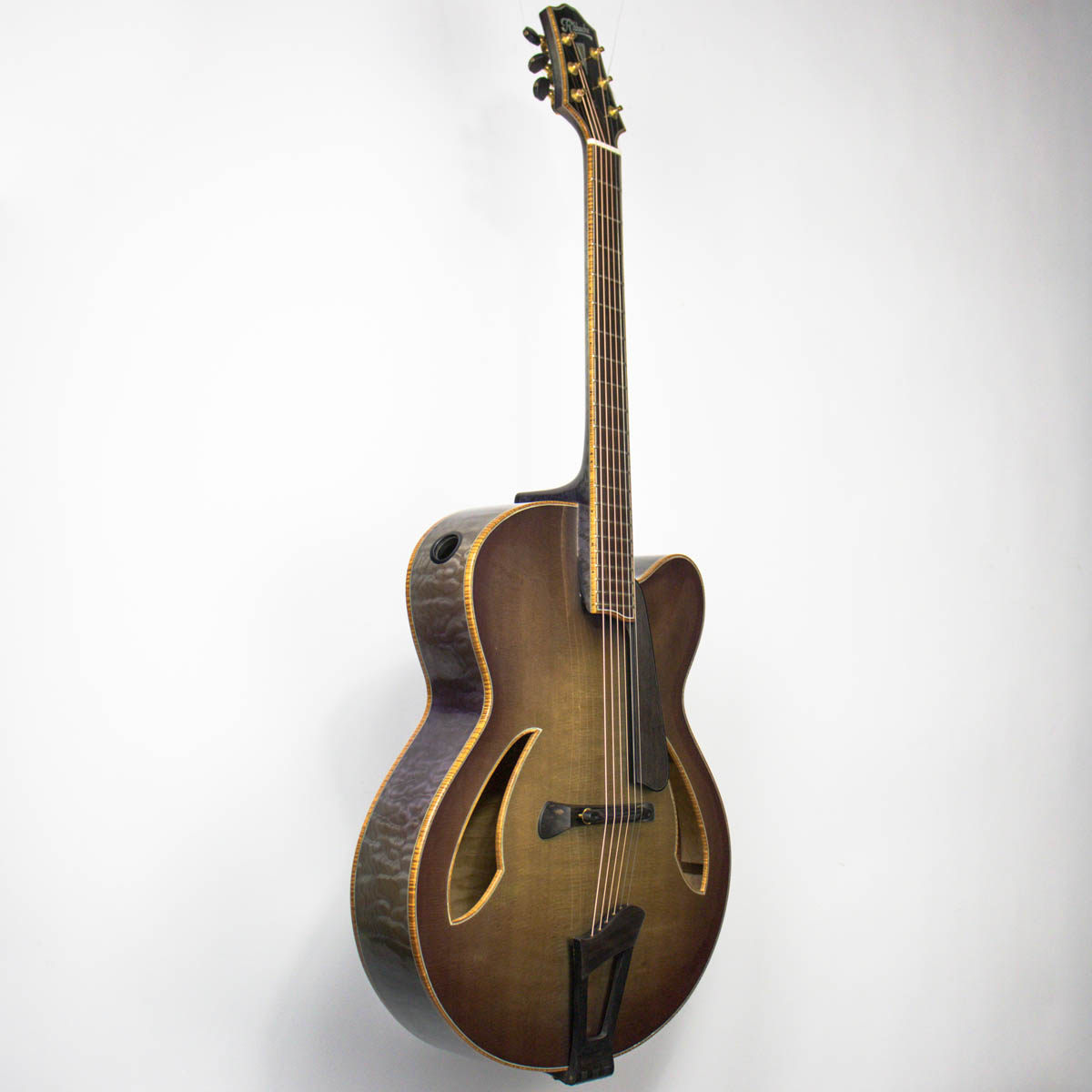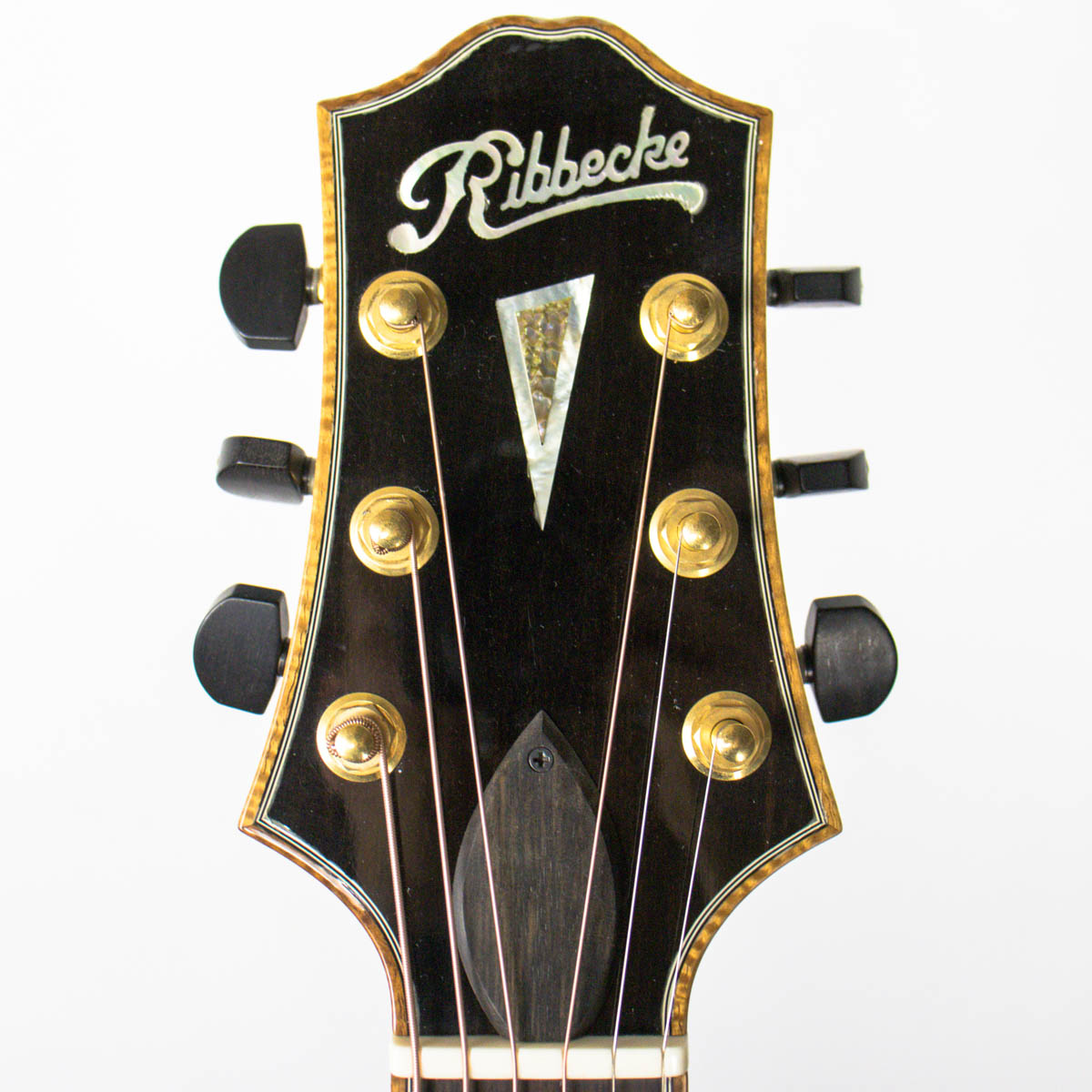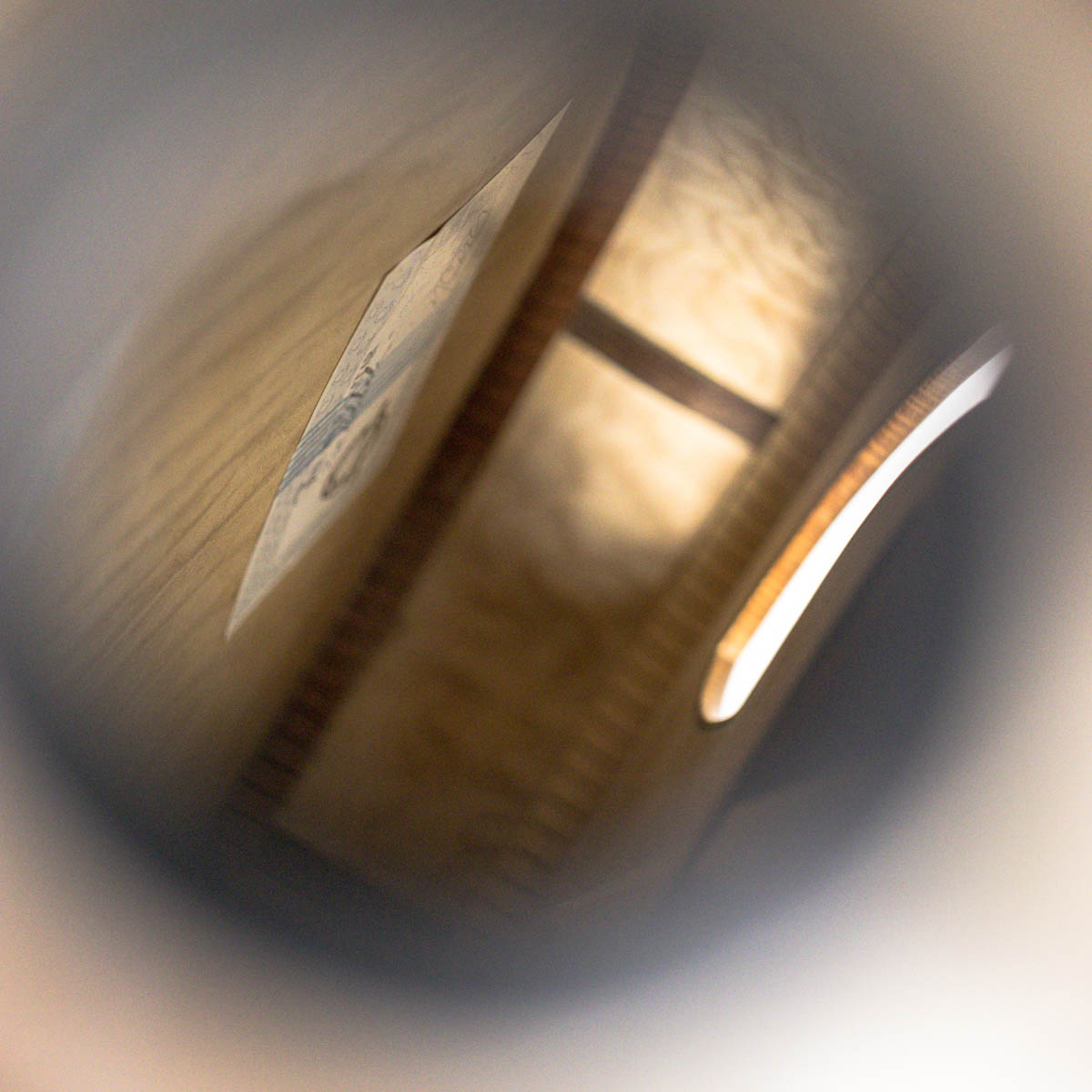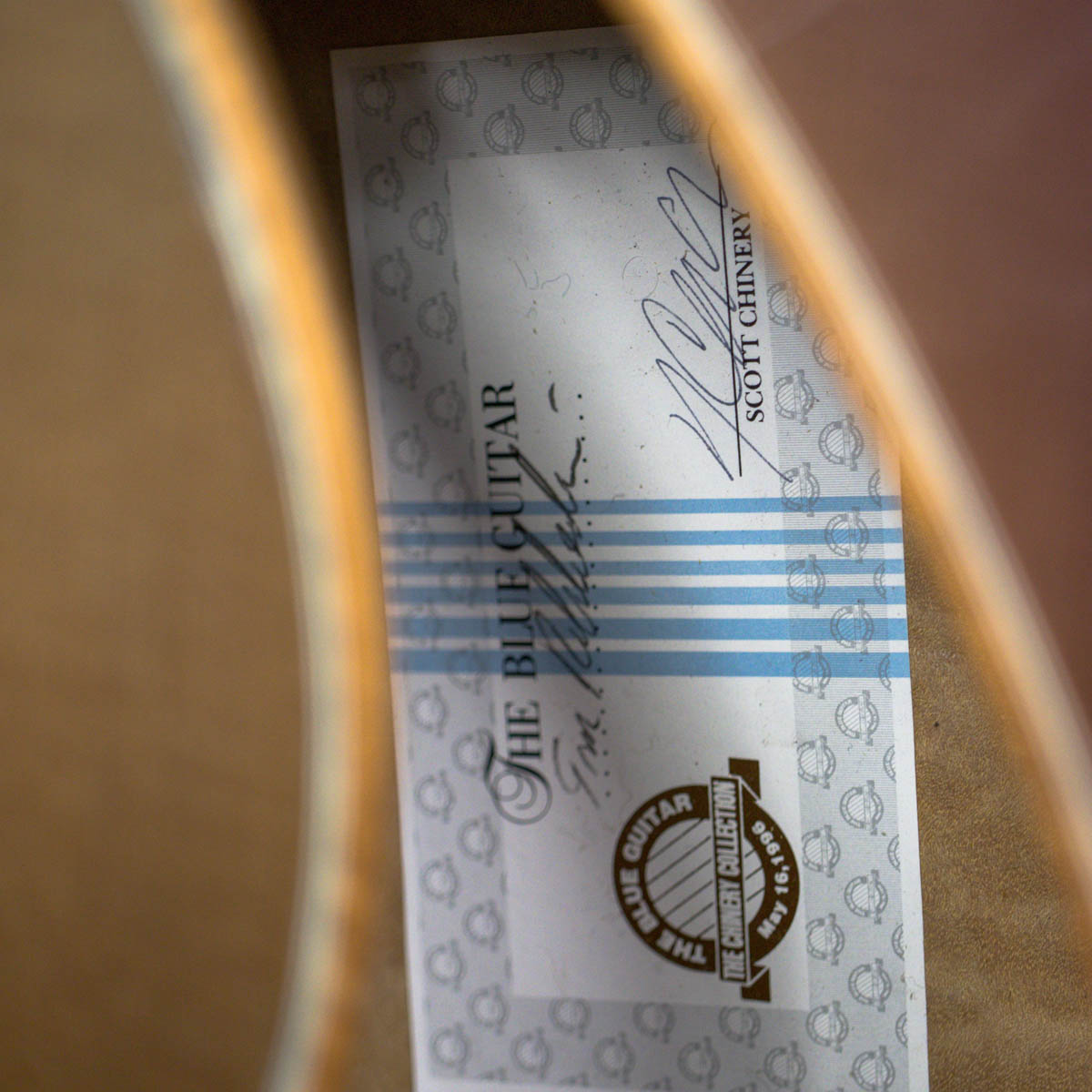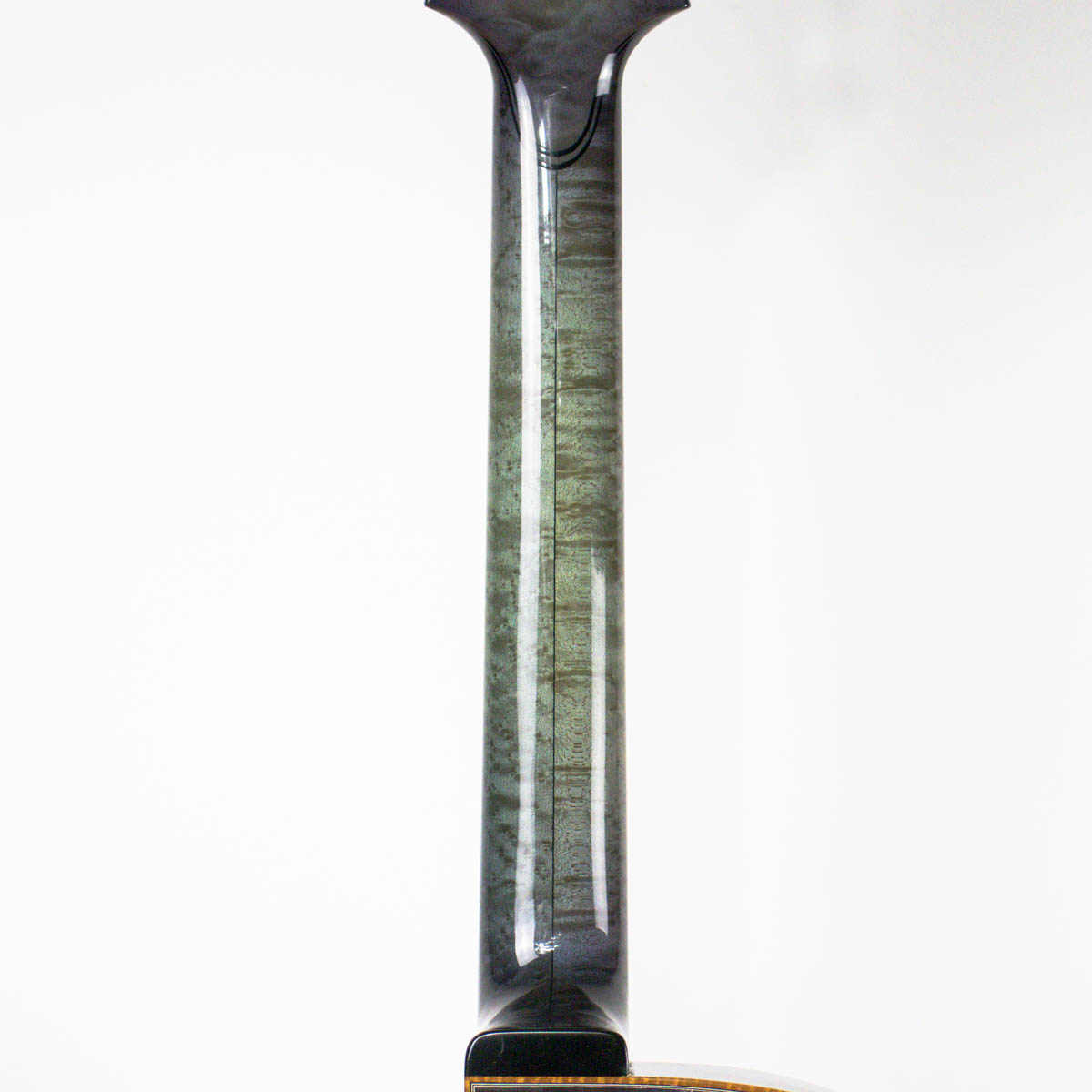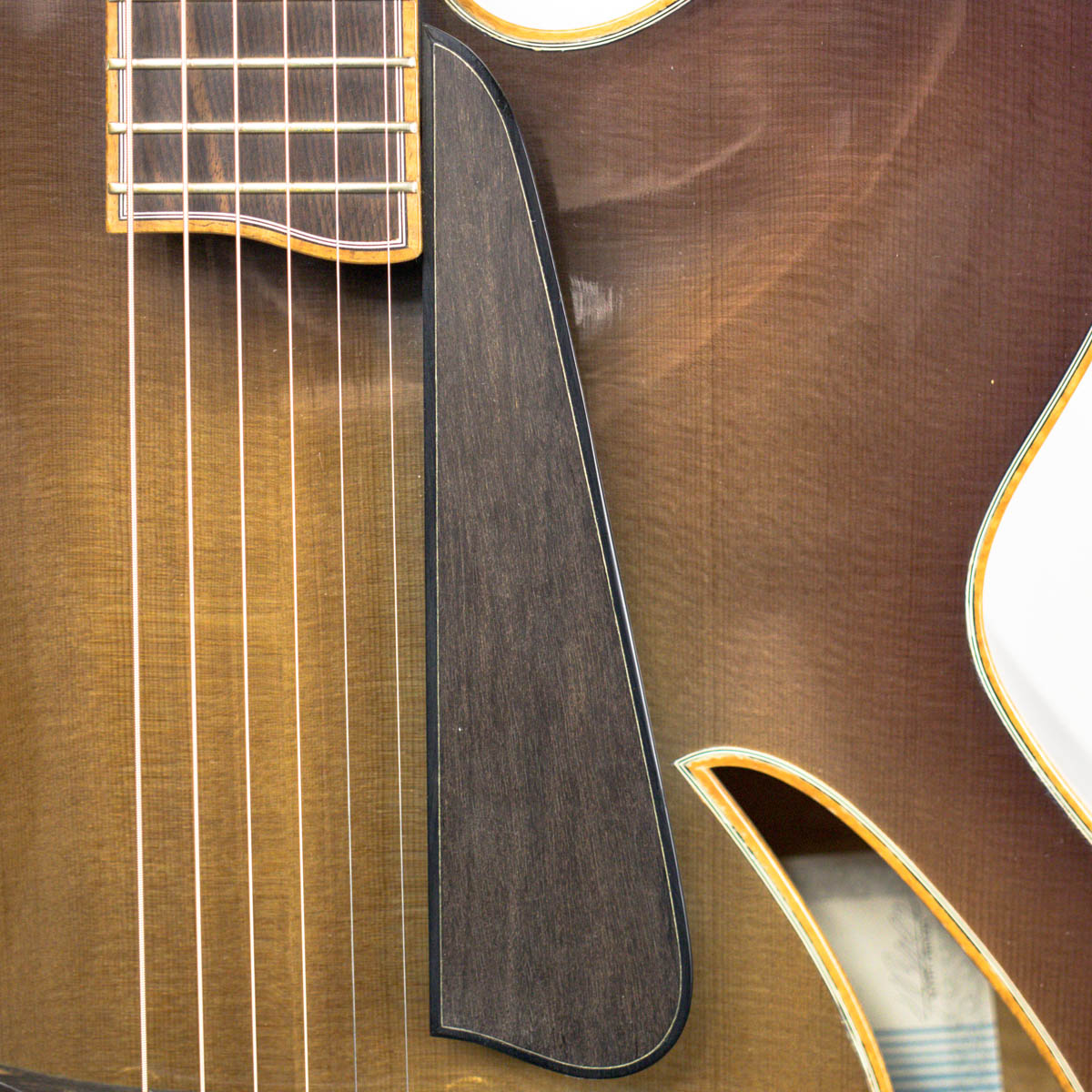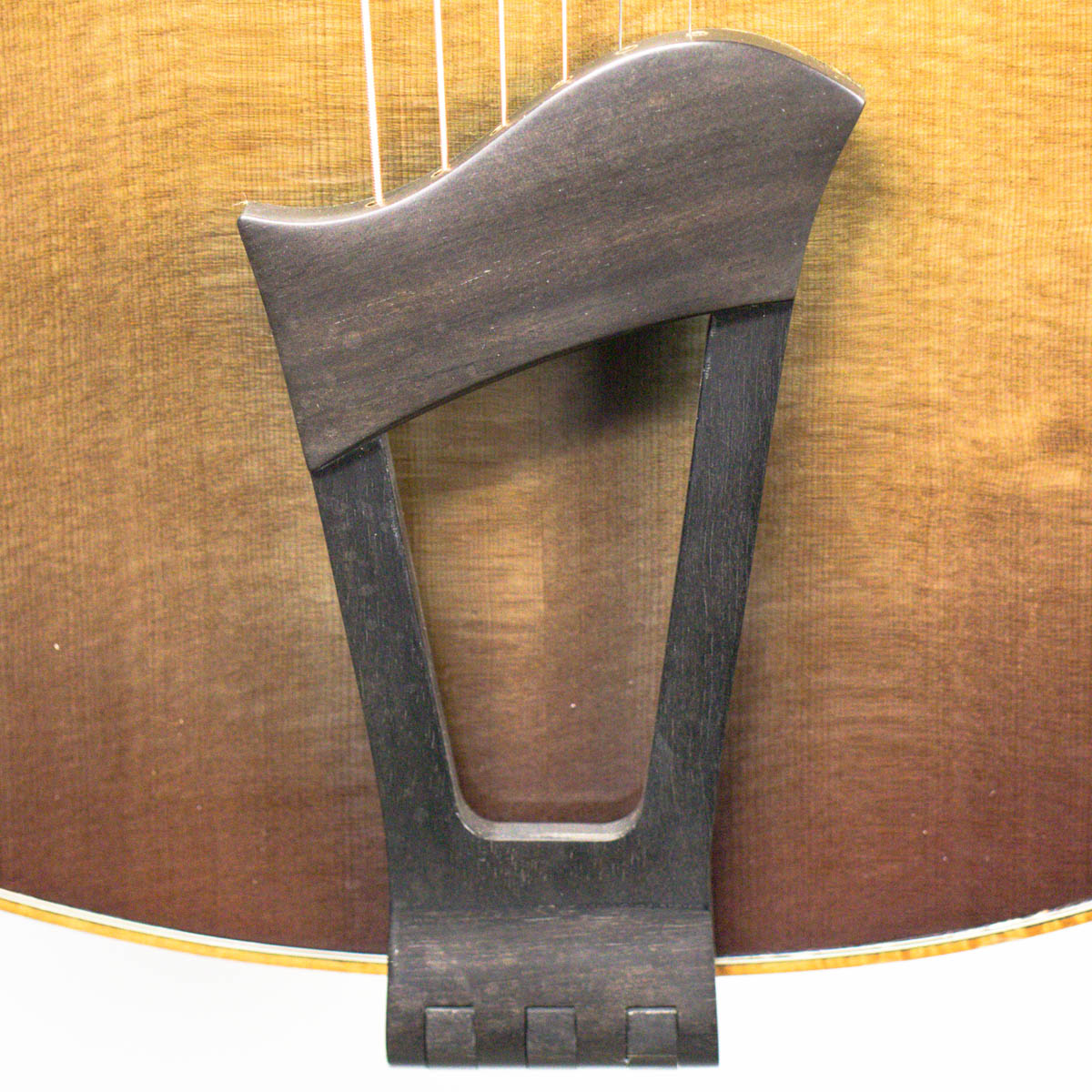Tom Ribbecke–Blue Mingione
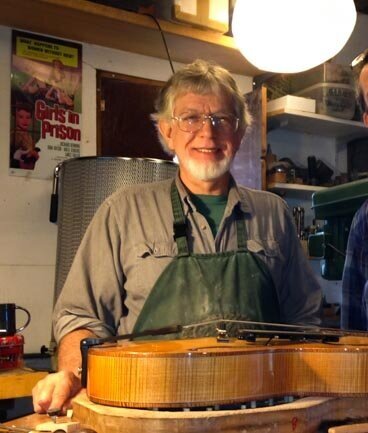
Tom Ribbecke was born in Brooklyn, New York. Tom attended NYU Syracuse University Newhouse School of Communications and earned a BFA in Music and a BA in communications. He relocated to San Francisco in the early 70’s and opened his first lutherie shop in the Mission district. Ribbecke never apprenticed under anyone but his thirst for knowledge allowed him to teach himself through various books and advice from local luthiers. Now, one of the premier archtop builders in the world, with a considerable waiting list and many different models of guitars and basses employing carved top and back technology. He has a reputation for creating instruments that perfectly suit his clients needs.
Ribbecke is decades into his second stint as a full-time luthier as in 1985, doctors told him he would never make guitars again. Ribbecke’s undying passion for lutherie never stopped him, and after five years of recovery returned to lutherie, and began taking on apprentices and passing on the knowledge of the art of lutherie to future generations.
Tom continues to hand-craft truly exceptional museum quality archtops of exquisite design for which he is world famous in very limited numbers.
Ribbecke’s Blue Mingione was named after old-time jazz player Andy Mingione, and is a truly unique piece compared to his usual works. The guitar was constructed with an asymmetrical sitka spruce top, and quartersawn big-leaf western quilted maple back, and sides. The neck is birdseye maple with a rosewood fingerboard. Ebony is used on the bridge, pickguard, tailpiece, tuning buttons, truss rod cover, and headstock overlay.. The binding on the guitar is made of flamed curly koa wood from hawaii. This guitar also features abalone inlay on the headstock, as well as an attachable ebony sound horn that can be used on the sound port on the upper bout of the guitar.
While all of the Blue Guitars have changed in color over the years due to the unstable nature of the original dye selected for the project, Tom’s guitar changed almost immediately to a plum color. When he presented his guitar to Scott Chinery, Tom asked that he be allowed to refinish the guitar to get back to blue. Scott smiled, and said “No, keep it like that–I like this color even better!”
